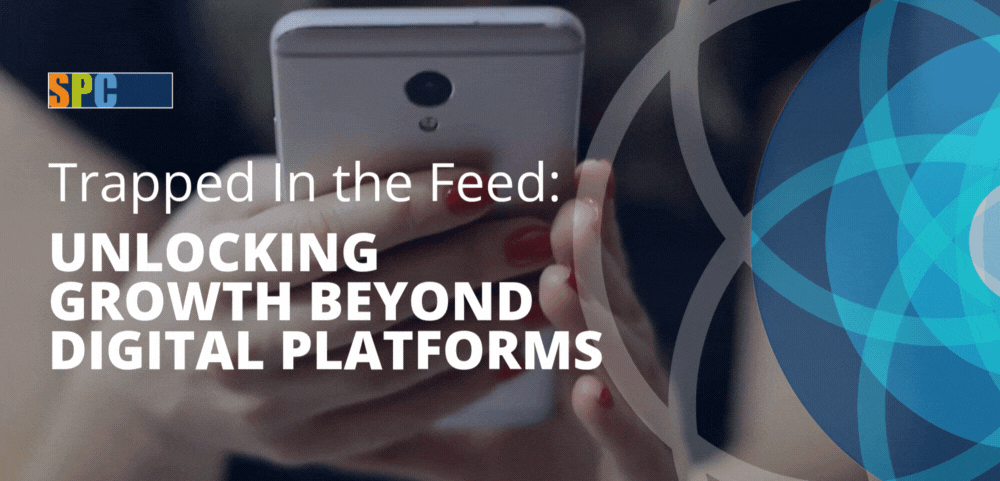
Written by Jamie Miller, a Strategic Accounts Executive at SPC, who has been working with clients for over 20 years to develop innovative solutions. In this blog post, Jamie shares his observations on how digital marketing has not fully achieved its response performance goals. He suggests that integrating digital efforts with direct mail may still be a viable strategy.
It’s no secret that digital advertising dominates marketing budgets today. TikTok, Facebook, Instagram, and other platforms promise reach, scale, and endless targeting capabilities. However, there’s a growing truth that marketers are quietly recognizing: digital platforms are not built to convert customers because they are designed to keep people scrolling.
The Walled Garden Problem
Every major social platform has the same business model: keep users inside their ecosystem for as long as possible. TikTok doesn’t want you leaving the feed to shop on a brand’s site. Instagram isn’t incentivized to send traffic elsewhere. Even Facebook, with all its advertising focus, is optimized to keep you on its platform. Are they concerned about selling your product or service or simply capturing more of your marketing budget?
That means your carefully crafted call-to-action is swimming against the current of the very environment you’re paying to advertise in. The platforms get their ad revenue whether or not your customer ever converts.
Google Zero
Marketers are also running up against what’s known as “Google Zero.” In the past, searching was a reliable way to capture high-intent prospects and guide them directly to your website. Today, however, Google answers queries directly on the results page through featured snippets, knowledge panels, maps, and shopping ads without the user ever clicking through. That means brands invest heavily in SEO and paid search only to find that Google is capturing the traffic and keeping users within its own ecosystem. The result? Fewer opportunities to convert to actual paying customers.
Impressions vs. Impact
Marketers often confuse activity for effectiveness. A million impressions and thousands of likes may look impressive on a dashboard, but they don’t translate into revenue. The truth is, digital advertising can be incredibly efficient at driving attention, but it’s inefficient at creating actual customers.
Click-through rates continue to decline, competition for attention grows more expensive by the day, and attribution across fragmented digital channels is becoming increasingly murky.
The Future of Conversions Is Multi-Channel, with Direct Mail being the Cornerstone for Driving Response
Unlike digital platforms, direct mail isn’t trying to keep someone in an app or on a feed. It’s a 1:1 medium that drives the consumer toward a next step: scan, call, visit, buy. The format itself is aligned with your business objective, not simply driving ad revenue for a platform.
Even better, when driven by data and intelligent triggers, direct mail delivers relevance at the individual level at the precise moment when the consumer is most likely to take action. That’s the kind of measurable impact digital channels struggle to replicate.
None of this is to say digital doesn’t matter because it’s still a critical top-of-funnel channel. Expecting platforms like TikTok, Facebook, and Instagram to deliver reliable conversions is asking them to work against their own business model.
The marketers seeing real results today are the ones using digital for awareness and pairing it with conversion-focused channels like direct mail. By aligning the direct mail channel as a conversion mechanism, they’re building strategies that don’t just generate clicks, they generate customers.










